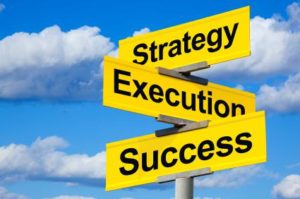Three Tips for Discipline Over Distraction, Focus Over Failure
Ok, we don’t really have to say it. As a leader, you know there are a lot of external current events and challenges creating divisiveness and dissention today.
And yet, there is still so much goodness in the world, and your people need to stay focused and productive within their jobs.
In your role, you may be grappling with a culture that is struggling with that focus and productivity. But you need to get a hold of it. And at MAP, we know it’s more than possible.There are strategies that work. As a leadership and management consulting firm that for over 60 years, we have coached 170+ leaders and organizations through good times and bad. We’ve seen countless leaders choose discipline over distraction and focus over failure. We know you can do it, too.
The following tips are relevant right now. Use them to prevent and address any strife leading to walls or setbacks in your midst.
Talk less, listen more. The best information comes from asking the best questions. Listening more (80 percent of the time) and then asking probing questions (20 percent of the time) is the fastest way to grow understanding and get the right answers. As a leader, even bringing some humility to the table by saying some version of, “I’ve got a dumb question to ask, what does X mean?” can yield what psychologists call deep structures of information. You and your direct report, team member, client, etc., know you’re not really dumb. However, this approach can successfully invite connection, engagement and understanding. It’s a bridge-builder.
Avoid preferential tendencies. You’re going to like and agree with some people more than others–it’s human nature. But in a leadership position, playing favorites is one of the fastest ways to build barriers and hostilities. It can sink employee morale. Avoid this by holding all accountable, including yourself. Make everyone deliver in ways that are fair yet equally challenging according to the goals and expectations set before them. Be impartial and consistent around how you address performance issues. Spread recognition around, finding ways to recognize all. And coach direct reports to not play favorites with their hires and/or team members. It’s got to be clear you support a culture of total equity.
Nurture the solution-oriented mindset. As a leader, you know problems will arise. And employees will come to you with disagreements or clearly divided over issues professionally (or even personally). When that happens, ask them to bring at least two solutions to the table before you engage. And in your management training, be proactive, making it a habit with your direct reports to surface potential barriers and challenges, developing contingency plans for what could go wrong and have it ready. Build and maintain an environment where you demand solutions over strife. Instead of stubborn conflict, divisiveness, and even fear, you’ll find productivity, progress and positive results.
We want to know! What are you doing to build bridges, not walls in your organization today?



